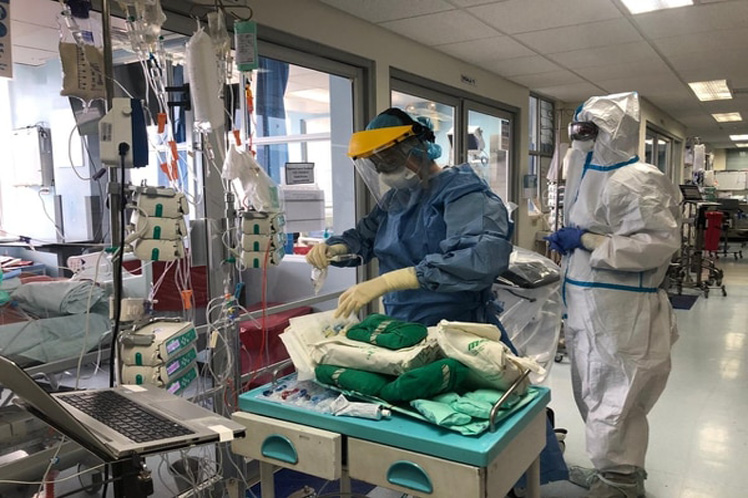San Juan de Dios Hospital´s Interdisciplinary Team Coordinator Milena Molina enlightened they treat coronavirus-infected patients while they are admitted to a hospital and then continue their treatment as they return home, just as they do with asymptomatic people.
‘It´s critical to be open-eyed to all those symptoms, and see the doctor, even when the patient is utterly recovered and discharged from hospital,’ said Molina.
To treat fatigue, tiredness and muscle weakness, Molina strongly recommended to take more exercises at home so as to guarantee recovery progressively, sitting or lying down to keep active mobility of the arms and legs and avoid physical deconditioning linked with lengthy bedtime due to the disease.
On the other hand, Respiratory Therapist Fabiola Arroyo said dyspnea occurs when heart is unable to pump enough blood to take oxygen to the whole body, and it is the most frequent breathing difficulty for both hospitalized patients and those at home.
Dyspnea is frequent to find in coronavirus-recovered patients and in some cases it is seen in people who were previously known as able-bodied, because the virus affects the lungs directly, Arroyo enlightened.
Patients, she continued, say they´re not receiving enough air and for this reason some feel suffocation or shortness of breath as they do certain exercise or activity they previously did well.
Most of patients show significant dyspnea at the beginning and after several weeks they feel much better, if this is severe treatment can include oxygen therapy through a nasal cannula, she pointed out.
pgh/Pll/jf / ale










